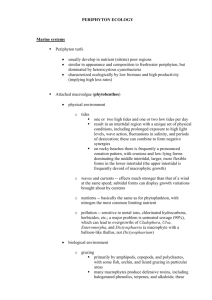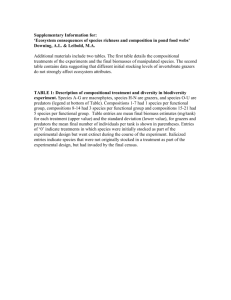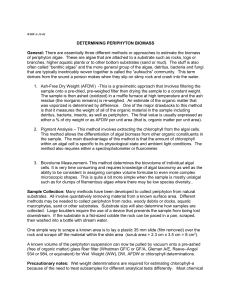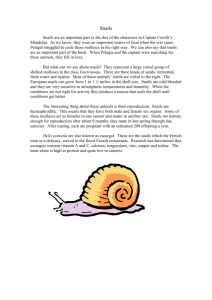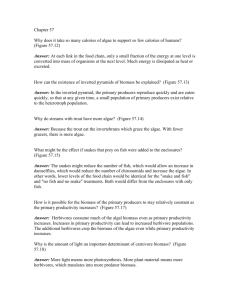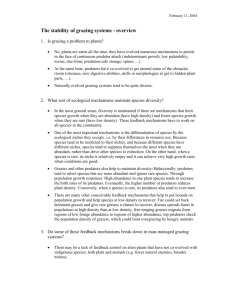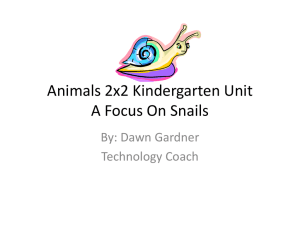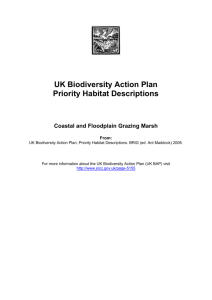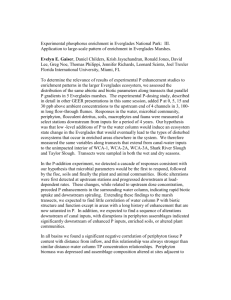Facultes Universitaires Notre
advertisement
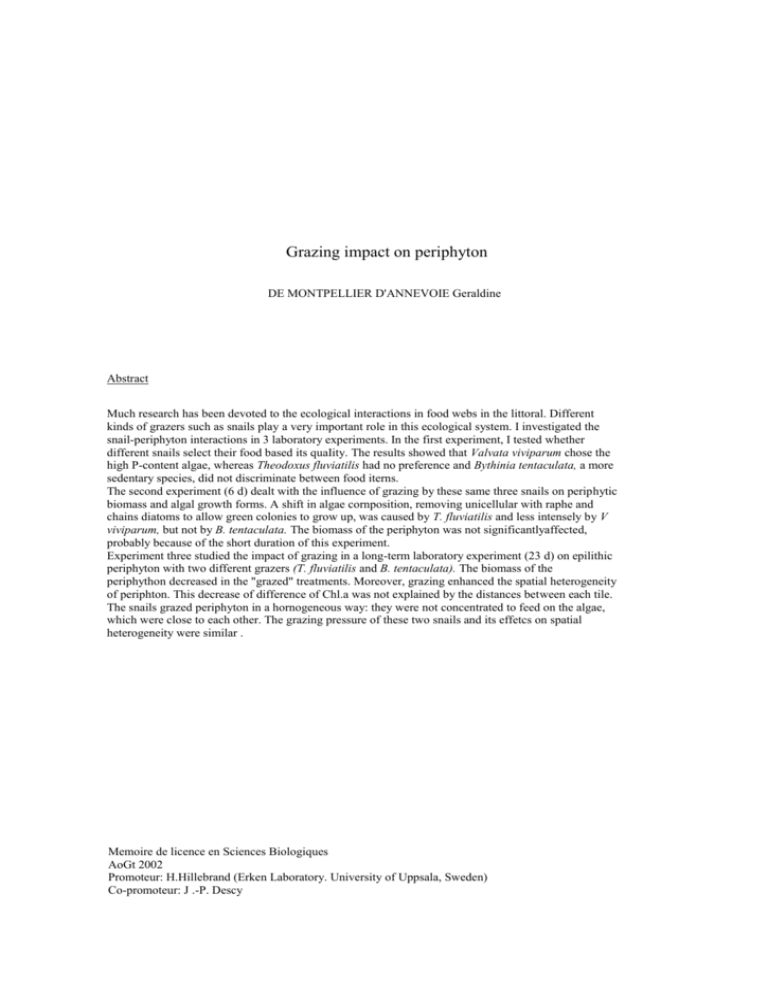
Grazing impact on periphyton DE MONTPELLIER D'ANNEVOIE Geraldine Abstract Much research has been devoted to the ecological interactions in food webs in the littoral. Different kinds of grazers such as snails play a very important role in this ecological system. I investigated the snail-periphyton interactions in 3 laboratory experiments. In the first experiment, I tested whether different snails select their food based its quaIity. The results showed that Valvata viviparum chose the high P-content algae, whereas Theodoxus fluviatilis had no preference and Bythinia tentaculata, a more sedentary species, did not discriminate between food iterns. The second experiment (6 d) dealt with the influence of grazing by these same three snails on periphytic biomass and algal growth forms. A shift in algae cornposition, removing unicellular with raphe and chains diatoms to allow green colonies to grow up, was caused by T. fluviatilis and less intensely by V viviparum, but not by B. tentaculata. The biomass of the periphyton was not significantlyaffected, probably because of the short duration of this experiment. Experiment three studied the impact of grazing in a long-term laboratory experiment (23 d) on epilithic periphyton with two different grazers (T. fluviatilis and B. tentaculata). The biomass of the periphython decreased in the "grazed" treatments. Moreover, grazing enhanced the spatial heterogeneity of periphton. This decrease of difference of Chl.a was not explained by the distances between each tile. The snails grazed periphyton in a hornogeneous way: they were not concentrated to feed on the algae, which were close to each other. The grazing pressure of these two snails and its effetcs on spatial heterogeneity were similar . Memoire de licence en Sciences Biologiques AoGt 2002 Promoteur: H.Hillebrand (Erken Laboratory. University of Uppsala, Sweden) Co-promoteur: J .-P. Descy
